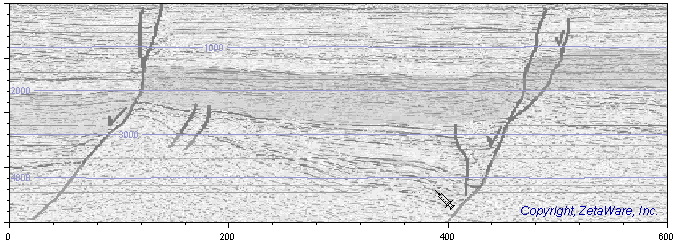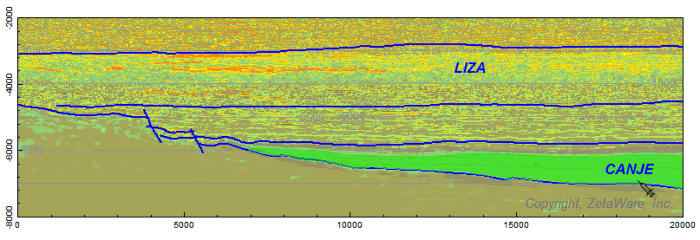| Trinity Movie Examples |
| | Home... | Gallery... | Brochure ... | Products ... | |
Trinity 2D -- an undocumented feature
Other movies:
Giant discoveries | Migration movie. | Expulsion movie | Maturation movie | Western Canada example | Salt restoration | Norway Example | 3D subsidence and maturation | Migration at microscopic scale
If you have an seismic image, you may paste it in Trinity and look at migration in 2D using the seismic attributes as lithological variations. I grabbed this image of Hope Basin in the Chukchi Sea, Northwestern Alaska (from USGS) from Dr. Jaime Toro's web site .
Coolest part is that you can draw some faults or other features in the map editor to make oil go where it should or not where it should not. You may also play with the facies contrast using the scale map operation and the slope of the surface to investigate the relative importance of buoyancy vs. capillary pressure in charging a prospect.

It is interesting to note that although the absolute values of the capillary field is not know from the seismic data, the lateral continuity of the seismic facies are controlling the up-stepping of migration paths. Testing the parameters that control this phenomenon against known accumulations may help us develop empirical migration models in the area.

Copyright ©2001-2007, ZetaWare, Inc. All rights reserved